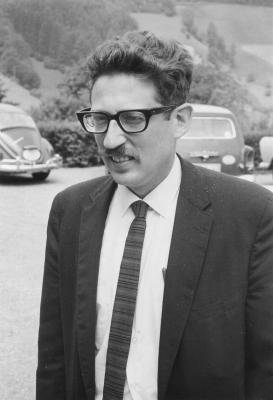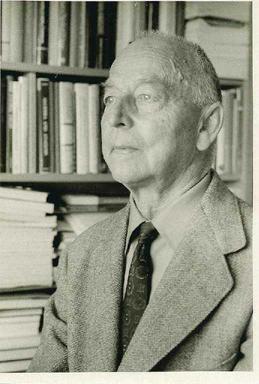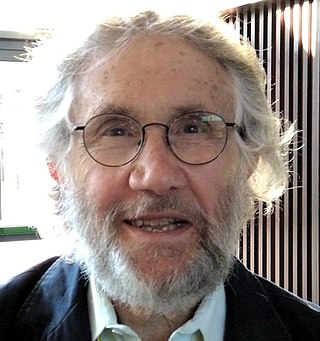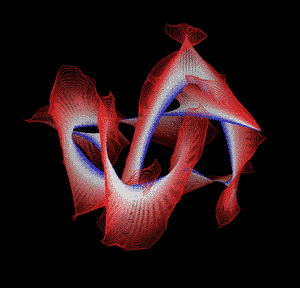Related Research Articles

Gábor Szegő was a Hungarian-American mathematician. He was one of the foremost mathematical analysts of his generation and made fundamental contributions to the theory of orthogonal polynomials and Toeplitz matrices building on the work of his contemporary Otto Toeplitz.
In the mathematical field of knot theory, the HOMFLY polynomial or HOMFLYPT polynomial, sometimes called the generalized Jones polynomial, is a 2-variable knot polynomial, i.e. a knot invariant in the form of a polynomial of variables m and l.

Nathan Jacobson was an American mathematician.

Irving Kaplansky was a mathematician, college professor, author, and amateur musician.

Daniel J. Kleitman is an American mathematician and professor of applied mathematics at MIT. His research interests include combinatorics, graph theory, genomics, and operations research.

Olive Clio Hazlett was an American mathematician who spent most of her career working for the University of Illinois. She mainly researched algebra, and wrote seventeen research papers on subjects such as nilpotent algebras, division algebras, modular invariants, and the arithmetic of algebras.

William Bernard Raymond Lickorish is a mathematician. He is emeritus professor of geometric topology in the Department of Pure Mathematics and Mathematical Statistics, University of Cambridge, and also an emeritus fellow of Pembroke College, Cambridge. His research interests include topology and knot theory. He was one of the discoverers of the HOMFLY polynomial invariant of links, and proved the Lickorish-Wallace theorem which states that all closed orientable 3-manifolds can be obtained by Dehn surgery on a link.

Joseph Leonard Walsh was an American mathematician who worked mainly in the field of analysis. The Walsh function and the Walsh–Hadamard code are named after him. The Grace–Walsh–Szegő coincidence theorem is important in the study of the location of the zeros of multivariate polynomials.
Eliezer 'Leon' Ehrenpreis was a mathematician at Temple University who proved the Malgrange–Ehrenpreis theorem, the fundamental theorem about differential operators with constant coefficients. He previously held tenured positions at Yeshiva University and at the Courant Institute at New York University.

Richard Anthony Brualdi is a professor emeritus of combinatorial mathematics at the University of Wisconsin–Madison.

Knotted proteins are proteins whose backbones entangle themselves in a knot. One can imagine pulling a protein chain from both termini, as though pulling a string from both ends. When a knotted protein is “pulled” from both termini, it does not get disentangled. Knotted proteins are very rare, making up only about one percent of the proteins in the Protein Data Bank, and their folding mechanisms and function are not well understood. Although there are experimental and theoretical studies that hint to some answers, systematic answers to these questions have not yet been found.
Charles F. Dunkl is a mathematician at the University of Virginia who introduced Dunkl operators.
Albert Charles Schaeffer was an American mathematician who worked on complex analysis.
James Alexander Shohat was a Russian-American mathematician at the University of Pennsylvania who worked on the moment problem. He studied at the University of Petrograd and married the physicist Nadiascha W. Galli, the couple emigrating from Russia to the United States in 1923.
James Dugundji was an American mathematician, a professor of mathematics at the University of Southern California.
Joseph Leonard Ullman was a mathematician who worked on classical analysis with a focus on approximation theory.
In functional analysis, the Birkhoff–Kellogg invariant-direction theorem, named after G. D. Birkhoff and O. D. Kellogg, is a generalization of the Brouwer fixed-point theorem. The theorem states that:
Moss Eisenberg Sweedler is an American mathematician, known for Sweedler's Hopf algebra, Sweedler's notation, measuring coalgebras, and his proof, with Harry Prince Allen, of a conjecture of Nathan Jacobson.
Lloyd Lyne Dines was an American-Canadian mathematician, known for his pioneering work on linear inequalities.

Arnoldus Bernardus Jacobus Kuijlaars is a Dutch mathematician, specializing in approximation theory.
References
- 1 2 3 4 Curriculum vitae, retrieved 2015-02-09.
- ↑ Wertheim, Margaret (Winter 2005–2006), "Where the Wild Things Are: An Interview with Ken Millett", Cabinet Magazine, 20.
- ↑ Manturov, Vassily (2004), Knot Theory, CRC Press, p. 57, ISBN 9780203402849 .
- ↑ Kenneth Millett at the Mathematics Genealogy Project
- ↑ Writing Awards: The New Polynomial Invariants of Knots and Links, MAA, retrieved 2015-02-09.
- ↑ Lickorish, W. B. R.; Millett, K. C. (1988). "The New Polynomial Invariants of Knots and Links". Mathematics Magazine. 61 (1). Taylor & Francis: 3–23. doi:10.1080/0025570x.1988.11977338. ISSN 0025-570X.
- ↑ List of Fellows of the American Mathematical Society, retrieved 2015-02-08.